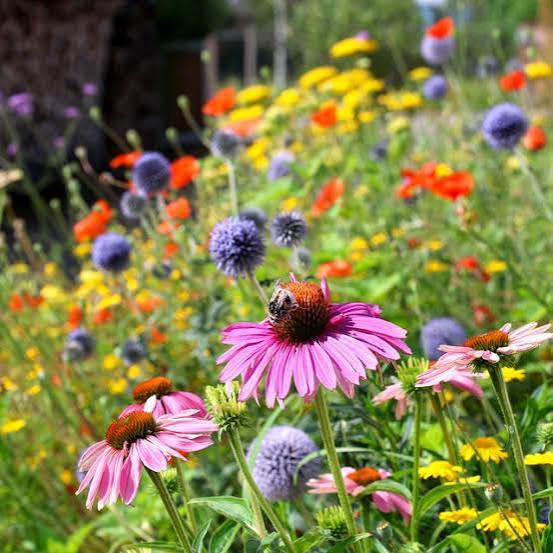If you’re looking to bring bursts of color, life, and biodiversity into your outdoor space, it’s time to transform your garden with how to plant wildflowers! Wildflowers are low-maintenance, eco-friendly, and incredibly beautiful, making them a perfect choice for homeowners, urban gardeners, or anyone wanting a natural, vibrant garden. Whether you want a small patch in your backyard, a large meadow-style garden, or even a container display, planting wildflowers can completely change the look and feel of your outdoor space.Why Plant Wildflowers?Planting wildflowers has more benefits than just adding color. When you transform your garden with how to plant wildflowers, you also:Support pollinators – bees, butterflies, and hummingbirds love wildflowers.Reduce maintenance – many wildflowers are drought-tolerant and low-care.Enhance biodiversity – a variety of flowers supports birds, insects, and soil health.Create natural beauty – from soft pastels to bold vibrant hues, wildflowers add charm.Wildflowers are not only visually appealing, they are also environmentally friendly, making them a perfect choice for sustainable gardens.Step 1: Choose the Right Wildflower MixBefore planting, consider:Climate: Different species thrive in different regions. In the U.S., for example, California poppies are ideal for the West Coast, while coneflowers are perfect for the Midwest.Soil type: Sandy, loamy, or clay soils affect which flowers will grow best.Purpose: Do you want a meadow-style garden, a border planting, or a container display?Tips for Selecting SeedsOpt for native wildflowers to ensure they adapt well to your region.Mix annuals and perennials for continuous blooms year after year.Choose a color palette that complements your existing garden.Step 2: Prepare the SoilWildflowers thrive in well-prepared soil, but they don’t require overly rich compost. Follow these steps to transform your garden with how to plant wildflowers effectively:Clear the area: Remove grass, weeds, and debris.Loosen the soil: Till or rake the top 1–2 inches to help seeds make contact with the soil.Test soil drainage: Wildflowers prefer well-drained soil; amend clay-heavy areas with sand or organic matter if needed.Optional: Lightly fertilize with a low-nitrogen fertilizer, but avoid high-nitrogen fertilizers as they encourage leaf growth over blooms.Step 3: Sow the SeedsThe key to success is even distribution and gentle planting:Mix seeds with sand to help distribute them evenly over the planting area.Scatter seeds lightly over the prepared soil.Press seeds into soil gently using a rake or by walking over the area. Avoid burying seeds too deep — most wildflowers need light to germinate.Water gently to settle the seeds.For larger areas, consider planting in rows or clusters to create natural-looking drifts of color.Step 4: Watering and CareWildflowers are relatively low-maintenance, but they need consistent care in the first few weeks:Water lightly but frequently until seeds germinate.Reduce watering gradually once seedlings establish.Mulch sparingly if desired, using light straw to retain moisture without blocking light.Most wildflowers thrive on minimal attention once established, making them ideal for gardeners who want beauty without constant upkeep.Step 5: Maintenance and Long-Term CareDeadhead flowers to encourage more blooms.Remove invasive weeds to prevent competition.Allow perennials to self-seed for natural spreading.Cut back annually to rejuvenate the bed and encourage fresh growth.By following these steps, your wildflower garden will continue to thrive and attract pollinators season after season.Design Ideas to Transform Your Garden1. Wildflower BorderPlant a mix along garden edges or pathways to create a colorful, soft frame for your garden.2. Meadow StyleCover a larger section with a mix of tall and short wildflowers for a natural, flowing look.3. Container GardensUse pots or raised beds for smaller spaces — ideal for balconies or patios.4. Pollinator PatchCombine nectar-rich wildflowers like coneflowers, black-eyed Susans, and milkweed to attract bees and butterflies.5. Seasonal LayersPlant a mix of early, mid, and late-season bloomers to keep your garden colorful throughout the year.Practical Tips for SuccessCheck germination time: Some seeds take longer than others; be patient.Start indoors: In cooler climates, start seeds indoors 4–6 weeks before transplanting.Protect from pests: Use netting or fencing if deer or rabbits are a concern.Enjoy the wildlife: Once established, watch bees, butterflies, and birds visit regularly.Conclusion: Transform Your Garden with How to Plant Wildflowers!Transforming your garden doesn’t require expensive plants or elaborate landscaping. By following these simple steps, you can transform your garden with how to plant wildflowers into a vibrant, pollinator-friendly paradise. From colorful borders to natural meadow-style plantings, wildflowers add charm, biodiversity, and a sense of tranquility to any outdoor space.Whether you live in the U.S., U.K., or Canada, wildflowers are a flexible, low-maintenance way to elevate your garden and enjoy nature’s beauty. Start small, experiment with native species, and watch your garden flourish with color, life, and seasonal blooms.

